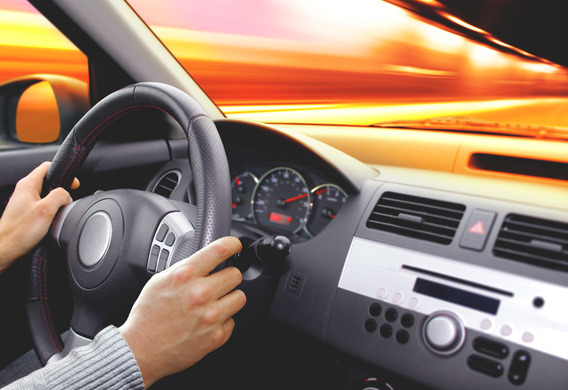
The heating of seats is a fairly common option for modern cars, it is proposed for expensive models as well as for machines of the average price segment. The steering wheel warm-up is much smaller. For a long time it was considered a "excess" and served as an attribute of exclusively luxury cars (BMW, Audi, Lexus, etc.). In recent years, this option began to appear on popular popular models: for example, in the golf course, Opel Astra J was the first one to get to the market in 2009, and now it is present in most models, right up to the Kia Rio. Warm-up: History of engineering thought
Warm-up: History of engineering thought
The first attempt to create a steering wheel heated by electricity was made at the beginning of the 20th century. In 1915, for example, Ruben S. Smith from the city of Kansas (USA) has received a patent on the electrically heated steering rim. It is well known that in the 1930s specialists of Ford Concern were working in this area, but the complicated situation in the world forced them to delay the serial launch of these technologies.
In the 1950s, when automobiles were finally "on track", the cars became more and more comfortable, and there was a new interest in steering. However, the main materials for the manufacture of the steering wheel were metal and wood, so it was difficult to implement the technology.
The idea of electrical heating of the steering wheel has subsequently been introduced with the development of the automotive industry. Leading automobile engineers have patented all new and new ways to implement this option. At present, the US Patent Office has about a dozen patents for the heating of the steering wheel (including patents from independent engineers, as well as from major automakers of type Alfa Romeo, DaimlerChrysler, GM Corporation, etc.).
At the turn of the 20th and 21st centuries this option was considered exceptionally lux and was offered as part of the house. packages, mostly for European executive classes. One of the first heated steering models was Opel Astra 2009 model year. Now a number of popular cars are equipped with this option (Opel Corsa, Hyundai Santa Fe, Honda CR-V).
How does the steering of modern cars be heated?
The basis of the steering system in modern cars is the heating element, which is placed under the control of the rudder in a special heating shell and connected to the onboard network. For safety reasons, the heating temperature should not exceed the temperature of the human body (usually up to 42 degrees), so to avoid too much heat, a temperature sensor is also installed under the sleeve. In addition, some heating systems also have a choice of heating mode.
Even if there is no car heating for the car, the motorists have a number of decisions to help themselves in the cold time of the year. The simplest and no technical overwork is a heated case that works from the cigarette lighter. Several years ago, such devices, produced mainly in China, were very popular, but today they are replaced by new, more advanced technologies.
The modern workshops offer features designed for self-installation. All devices can be divided into two types: these are either two separate heating elements, which are installed in places where the driver usually holds the rudder, or a complete heating option, which heats the rudder over the whole circle. The heating of the rudder is carried out with the heating of the seats or by pressing a separate button.
It is, in any case, less reliable than the same option implemented by the automaker. The point is that when the heating element is installed it must be carefully protected against the physical effects and that all steering wheel functions are preserved. These conditions can only be fully met if the car is assembled at the factory.
Warm-up: disputes on utility and further development of the idea
Incidentally, disputes over utility heating among motorists are still ongoing. For some, it is still an unnecessary option for topmarks, but for others (especially those living in the northern regions)-the need. Of course, without heating, the steering wheel during the winter can be bypassed if you are driving in gloves or to direct the heat from the stove to the handlebars. However, medics have proved that the deterioration in the circulation of the frozen hands is worse than the reaction to the brain, and in the conditions of the winter road the driver must always be ready for force majeure.
In parallel with the heating of the steering wheel there is talk of cooling systems. Already in the 20th century, many patents included both heating and cooling. Of course, this option is much less in use in the modern automobile world, but some workshops may, at the request of the motorist, offer devices to reduce the temperature of the steering wheel in hot time.









